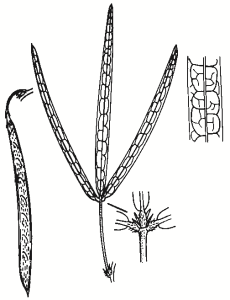Family:
Fabaceae
Glycine clandestina
Twining Glycine
Other Names:
First Nations Name(s):

Regional Subspecies:
Occurrence:
Regional:
Quite widespread across the drier slopes and hills of the region.
Habitat & Site Selection:
Generally observed only where grazing excluded. Tolerates moderate frost, and dry periods once established.
Habit:
Slender climber with fine leaves. Mauve to rose-purple or white flowers mainly spring, arising from stout woody rootstock.
Seed Collection:
Early Oct to late Feb. Monitor closely as seeds released very soon after maturity.
Propagation:
From scarified seed or cuttings. Pour boiling or very hot water over seeds and soak until water cools. Dry to prevent rotting and sow. Germination takes 3-4 weeks. Suitable for direct seeding in pots (2-3 seed per pot). Take cuttings of firm wood over summer. Strikes readily.
Regeneration:
Regenerates from seed and suckers, particularly after fire.
VALUES:
Land Protection:
Legume — improves soil fertility through ‘fixing’ nitrogen.
Wildlife:
Good habitat. Flowers a nectar and pollen source for native insects, including bees and wasps.
Ornamental:
Attractive light climber for gardens, on fences and logs. Very hardy when established, and responds to pruning. Prefers root protection.
Other:
Heavily grazed by stock as nutritious and palatable.
